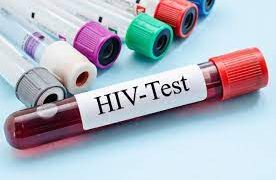Mobile phones and microwave ovens are some of the electronic devices that have made life easier and simpler for consumers.
However, there are claims that the use of electronic devices such as microwaves, laptops and mobile phones could expose users to cancer and other health complications.
According to the Deputy Director at the Radiation Protection Institute of the Ghana Atomic Energy Commission (GAEC), Dr Joseph Kwabena Amoako, although scientists and researchers have not been able to establish a direct correlation between users of these electronic devices and cancer, that assertion could not be ruled out entirely.
Controversy and panic
According to Dr Amoako, until 2011, magnetic fields from mobile phones had been classified as non-carcinogenic — they cannot cause cancers.
However, the numerous concerns from consumers globally prompted the International Agency for Research on Cancer (IARC) under World Health Organisation (WHO) that conducts and coordinates research into the causes of cancer to reclassify mobile phones.
He said the reclassification was done due to some large-scale studies done in some countries where mobile phone users were believed to have suffered from brain tumuors and certain types of cancers.
In the course of the studies, he explained that the IARC reclassified mobile phones from class Three to class Two B — possibly carcinogenic (some evidence to suggest the possibility, hence the need for consumers to take precautionary measures so that in case the position changes, consumers will not be caught pants down); Class Two A — probably carcinogenic (scanty evidence to draw conclusion). Class one has carcinogenic.
The studies, he noted, established that there was no cause and effect on the linkage between the use of the phone and the ailments they were suffering from. “But scientists do not want to wish off completely because there is the need for rigorous studies in the future since the position could change with time.
“Therefore, as scientists, we believe there is the need to take precautionary measures. So there were proposals from IARC that countries and manufacturers take precautionary measures such as introduction of hands free kits in phones, reducing exposure time on phones, using more text messages, and reducing the number of time spent on phones by children,” he stated.
In spite of that, Dr Amoako emphasised that the long term effect of those devices were still not known by scientists yet, “so consumers must not take chances at all since anything can change.”
Microwaves and mobile phones operate with radio waves and produce heat just like many other electronic devices. Mobile phones, for instance, operate with a frequency of 900 Megahertz.
As of 2018, the mobile phone subscriber rate in Ghana was 34.57 million, with a penetration rate of 119 per cent. Many have also raised concerns about Ghana’s population which is almost 30 million, as against mobile phone penetration rate.
Even though a lot of modern homes use microwaves to heat their foods, research is scanty on the exact number of users across the country. Laptops
On the use of laptops, he further advised those who put them on their laps for a long time to desist from that, saying the heat from the machine could cause danger to the scrotum and the sperm subsequently. For x-rays, even though he said it was an ionising radiation and produced heat that damages some cells in the body, there was minimal radiation, “so the advantages outweigh the disadvantages and that there is no cause for alarm.”
Telecommunication masts and health
With the growing demand for better network and services provided by telecommunication companies, there has been a surge in the siting of telecommunication masts in communities, raising some eyebrows about the linkage with cancer.
These poles, through antennas installed on them, transmit and receive radio signals from mobile phones and other wireless devices, which are invisible to the eyes. Without telecom masts or towers in communities, it will be impossible to operate mobile phones.
With the fear that these poles could generate health problems, consumers have opposed their siting, but still impress upon providers for better and quality services.
This phenomenon is what the physicist describes as the “Not In My Back Yard” (NIMBY) Syndrome — consumers are looking for better services but are opposed to anything they perceive to be dangerous to their health sited within their communities, noting that it does not work like that.
Dr Amoako indicated that scientists were uncertain about the possible correlation between the siting of the masts and cancers on humans.
But, he said, there were international guidelines and recommendations by the International Commission on Non-Ionising Protection, which regulates the levels of emissions from mobile phones and telecommunication masts. Responsibilities
Everybody has a responsibility to ensure safety in this regard. Manufacturers, consumers, regulators, and scientists must ensure that there is a good balance between the use of technology and the impact it has on the environment.
As consumers, the senior researcher said there was the need to look out for phones of good quality; ones with specific absorption rate (SAR) which measures the rate at which energy is absorbed by the human body when exposed to a radio frequency electromagnetic field.
“Every good mobile phone has a SAR and should not be more than two watts per kilogram in order not to produce a lot of heat on the ears when using it. “The state must also continuously test these devices before they are brought into the country and only allow those that meet standards,” he stated.
He pointed out that telcos must also follow guidelines in building masts in communities
source: My Joy Online



















































